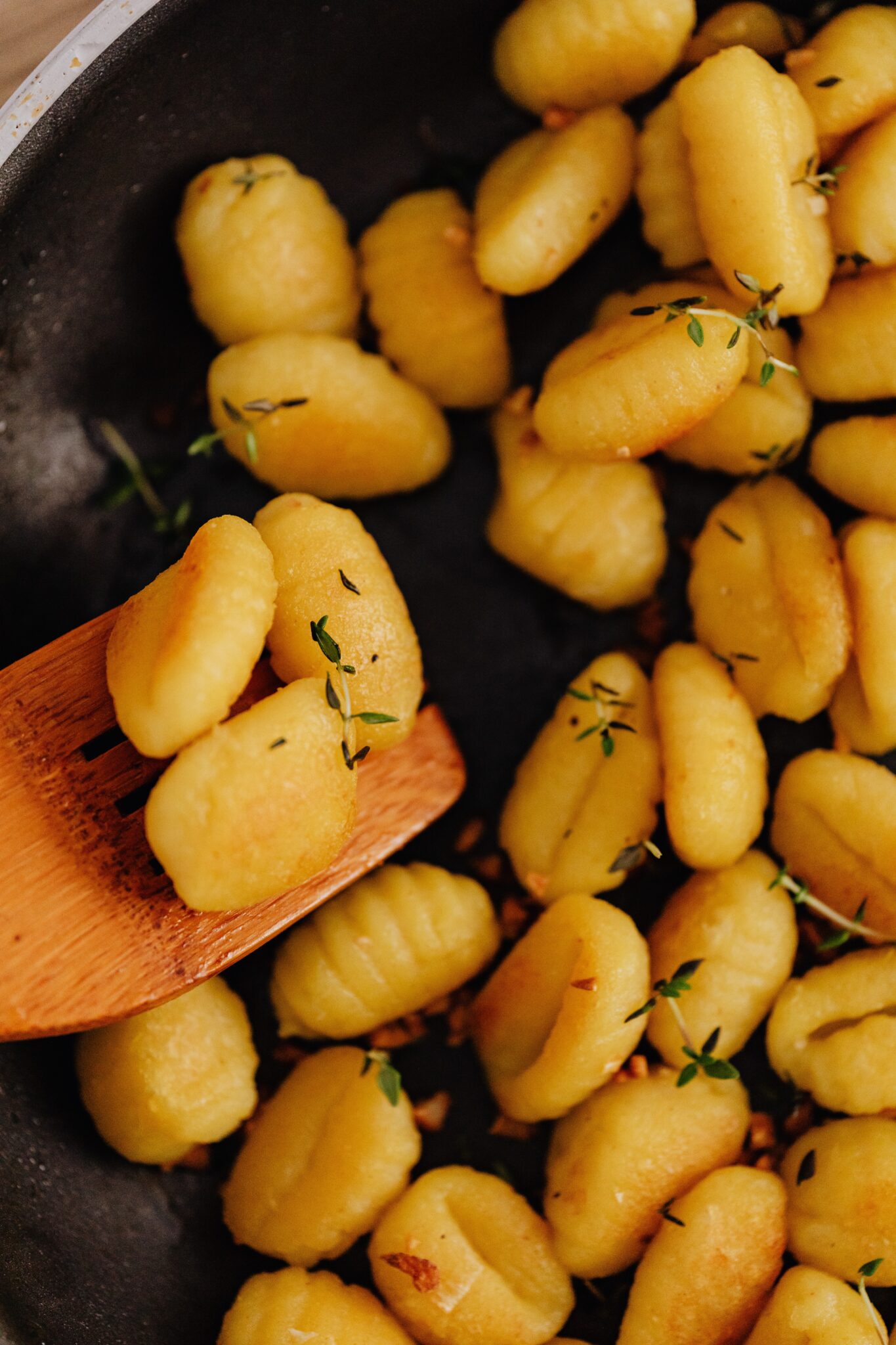By Chef Joseph Massaglia
I love gnocchi! Made properly, these little, light, airy dumplings usually made with potatoes are, as a friend says, “little pillows of heaven.”
It’s believed gnocchi originated in Northern Italy. The name came from the word “nocca,” which means knuckles, or the Lombard word “knohha,” which means knot – like a knot in wood. Gnocchi have been a traditional type of Italian pasta since Roman times and were originally made from semolina flour mixed with eggs. In the early 1500s, gnocchi were made with bread, milk and ground almonds (called “zanzarelli”). Later on, a mixture of eggs, flour and water were added to the “zanzarelli,” and the dough was pushed through a cheese grater and called “malfatti” (which means badly made).
Potato gnocchi date back to the 16th century when potatoes were introduced to Italy. But depending on the region, gnocchi are still made with a variety of base ingredients, including pumpkin, semolina, chestnut flour and cornmeal.
Not only does each region have its own gnocchi recipe, they each have their own specific sauce. In my home region of Valle D’Aosta, we make Gnocchi Bava, gnocchi in a butter sage cream sauce, Fontina cheese and broccoli. (It’s been on my menu at Mama Mia’s since I opened 35 years ago.) In Verona, they prefer a fresh tomato sauce, and in Sorrento, they love their gnocchi “alla sorrentina” – potato gnocchi baked with tomato sauce, mozzarella and basil.
In spring and summer, it’s wonderful to eat gnocchi with a basil pesto, which gives gnocchi a fresh taste without having to cook a sauce. Just toss cooked gnocchi with pesto sauce to taste, top with freshly grated Parmesan, and voilà – dinner is served!
I’ve included my gnocchi recipe here; feel free to toss it with your favorite pesto.
Buon Appetito!
Chef Joe Massaglia’s Original Recipe for Mama Mia’s Potato Gnocchi
- 4 large russet (not Yukon Gold) potatoes, unpeeled
- 2 tablespoons butter
- ¼ teaspoon nutmeg
- Salt and pepper to taste
- 2 large eggs and 1 egg yolk
- 1 to 1 ½ cups all-purpose flour
Line a baking sheet with parchment or waxed paper and dust with flour; set aside.
Pierce potatoes in several places with a fork; microwave on high for 8 to 10 minutes or until soft. (You also can bake at 375° until tender.) Cool slightly; carefully remove skins while potatoes are still hot.
Immediately put the potatoes through a ricer into a large bowl. Mix in the butter, nutmeg, salt and pepper until combined; add the eggs and egg yolk and combine with a spatula. Mix in 1 ¼ cups flour until a soft, not sticky, dough is formed. (You may need to add more flour, a tablespoon at a time, until you get the proper consistency.)
Put dough on a floured surface and gently roll into a circle ¾ inch thick. Important: Before making all the gnocchi, cut two or three ½ inch pieces from the circle, shape per the following directions and test in boiling water to make sure they don’t fall apart. If they do, you will need to add more flour to the dough before cutting.
Cut dough into 1-inch ropes, then cut each rope into ½ inch pieces. Shape gnocchi by pressing onto the tines of a floured fork or gnocchi paddle. Using light to medium pressure, roll the gnocchi on the fork or paddle to create a ridged surface. Place rolled gnocchi on a prepared baking sheet.
Bring 4 quarts of salted water to a boil in a large pot. Using a slotted spoon or spider, add half the gnocchi to the water; return to a boil and cook, gently stirring occasionally, until they float to the surface. Continue cooking for 1 to 2 minutes, until done. Repeat with remaining gnocchi.
If using immediately, add cooked gnocchi to your prepared sauce and serve with additional grated Parmesan cheese.
Note:
Cooked gnocchi pieces can be cooled completely on a lightly oiled parchment-covered baking sheet, covered with plastic wrap and stored in the refrigerator for up to 24 hours. Gently reheat in a prepared sauce.
Uncooked gnocchi pieces can be frozen on the prepared baking sheet, then transferred to a resealable plastic bag and frozen for up to 1 month. It’s best to thaw them about an hour before cooking in boiling water so they don’t become gummy.






